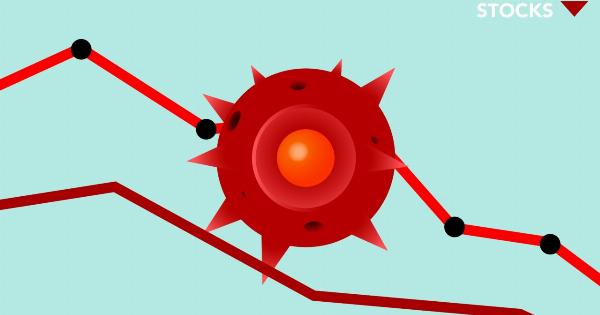Monogamous relationships are widespread in the animal kingdom, but what drives males to stay committed to one partner? The answer to this question lies in the molecular makeup of these males.
Researchers have discovered several key molecules that play a crucial role in promoting and maintaining monogamous behaviors in male animals. Understanding the molecular basis of monogamous relationships in males can shed light on the evolution and biology of bonding, ultimately providing a better understanding of human relationships as well.
Oxytocin: The Love Molecule
Oxytocin, often referred to as the “love hormone,” is a neuropeptide that has been extensively studied for its role in promoting bonding and social behaviors in mammals.
In monogamous male animals, oxytocin receptors are abundant in brain regions associated with reward, making them more responsive to oxytocin release. This heightened sensitivity to oxytocin enhances the formation and maintenance of pair bonds, leading to more committed relationships.
Vasopressin: Facilitating Partner Preference
Vasopressin is another important molecule involved in the molecular basis of monogamy in males. In species where males display monogamous behaviors, vasopressin receptors in the brain are expressed at higher levels.
Studies have shown that blocking vasopressin receptors in these species leads to reduced partner preference, demonstrating the critical role of this molecule in promoting the formation and maintenance of monogamous relationships in males.
Dopamine: The Reward System
Dopamine, a neurotransmitter associated with pleasure and reward, plays a significant role in monogamous relationships. In male animals, dopamine levels surge during social interactions with their mates, reinforcing the bond between partners.
Additionally, variations in genes related to dopamine signaling have been linked to differences in social fidelity and pair bonding tendencies, further supporting the involvement of dopamine in monogamous behaviors.
Endocannabinoids: Enhancing Trust and Intimacy
Endocannabinoids, signaling molecules within the endocannabinoid system, have been implicated in promoting trust and social attachments in monogamous males.
The release of endocannabinoids in response to positive social interactions enhances social reward and facilitates the establishment of long-term bonding. Studies have demonstrated that manipulating endocannabinoid signaling can disrupt monogamous behaviors, highlighting their role in the molecular basis of male monogamy.
Neurogenetics: The Influence of Genes
Genes also play a vital role in shaping monogamous behaviors in males. Studies on various species have identified specific genes associated with social bonding and pair bonding tendencies.
For example, variations in the avpr1a gene, encoding vasopressin receptors, have been correlated with differences in pair bonding behavior in male animals. Unraveling the neurogenetic basis of monogamy can provide insights into how genetic variations contribute to individual differences in relationship dynamics.
Hormonal Regulation: Effects of Testosterone and Estrogen
Hormones such as testosterone and estrogen have intricate effects on monogamous behaviors in males. Testosterone, which is often associated with aggression and promiscuity, can inhibit the formation of pair bonds.
On the other hand, elevated levels of estrogen, mainly through aromatization of testosterone, have been shown to promote social attachment and monogamous behaviors in males. The intricate balance between these hormones influences the molecular basis of monogamy.
Epigenetic Modifications: Environmental Influences
Recent research suggests that epigenetic modifications, alterations in gene expression caused by environmental factors, can have significant effects on the molecular basis of monogamous relationships in males.
Environmental factors such as early-life experiences and social interactions can modulate gene expression patterns, subsequently impacting bonding tendencies. Epigenetic modifications offer a potential explanation for the plasticity of monogamous behaviors and the influence of the environment.
Evolutionary Significance of Monogamy in Males
Understanding the molecular basis of monogamous relationships in males also provides insights into the evolutionary significance of monogamy.
Monogamy can confer advantages such as increased parental care, better resource allocation, and protection against infanticide. By unraveling the molecular mechanisms that drive male monogamy, researchers can better comprehend the evolutionary pressures and trade-offs that have shaped the development of monogamous behaviors across various species.
Implications for Human Relationships
Studying the molecular basis of monogamous relationships in animals has direct implications for understanding human relationships.
Many of the same neurotransmitters, hormones, and genetic mechanisms involved in monogamy in animals are also present in humans. By gaining a deeper insight into the molecular pathways driving monogamous behaviors, scientists can uncover potential therapeutic targets for relationship-related disorders like attachment disorders, infidelity, and relationship dissatisfaction.
Conclusion
Monogamy in males is not solely driven by societal or cultural factors but has a strong molecular basis.
Oxytocin, vasopressin, dopamine, endocannabinoids, genetic variations, hormonal regulation, epigenetic modifications, and evolutionary pressures all contribute to the complex web of monogamous relationships in males. By understanding the molecular underpinnings, scientists can gain a deeper appreciation for the diversity of relationship models in the animal kingdom and potentially develop interventions or therapies to enhance human relationships.






























